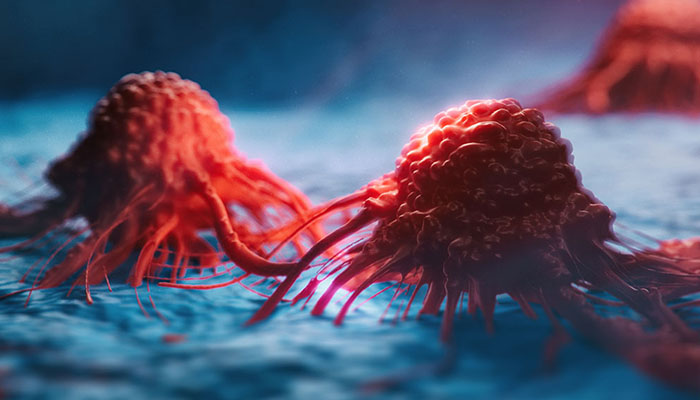HOW CAN WE HELP YOU? Call 1-800-TRY-CHOP
In This Section
CAR T-cell Therapy for Pediatric Brain Tumors: Q&A With Jessica Foster, MD

Physician-scientist Jessica Foster, MD, is researching CAR T-cell therapy for brain tumors.
Editor's Note:
At a recent event of the Childhood Brain Tumor Network (CBTN ), whose operations center is located at Children's Hospital of Philadelphia, Jessica Foster, MD, a neuro-oncologist who treats patients with pediatric central nervous system tumors, spoke about her brain tumor research and how using CBTN resources is helping to shape and form her work, and hopefully, accelerate discovery. Dr. Foster spends 80% of her time in the lab investigating chimeric antigen receptor (CAR) T-cell therapy for brain tumors such as high-grade gliomas, medulloblastomas, and diffuse midline gliomas. The goals of her research are to develop pre-clinical CAR T cells for translation into clinical trials to help patients with these devastating tumors.
In this Q & A, Dr. Foster discusses the highlights of her presentation. Gerri Trooskin, director of Partnerships for the Center for Data Driven Discovery in Biomedicine (D3b) and CBTN, answered the first question.
How prevalent are pediatric brain tumors, and how does the CBTN aid scientists with their research?
Gerri Trooskin: Within pediatric illnesses, brain tumors are the leading cause of disease related deaths in this country and many others, yet no drug has been developed and approved specifically for malignant childhood brain tumors. Brain tumors are complicated. There are over 100 types, and even the largest institutions don't see enough volume to gather all the samples, clinical data, and so on, to conduct a study. It would take years to amass enough data, and that's where CBTN comes in.
Tumor tissue is where all of the information about a brain tumor lies. CBTN is a shared biorepository for tissue samples to track the tissue or to track the clinical data longitudinally and then to make those resources available to researchers around the globe. This is about connecting and harnessing and empowering that information to accelerate research and precision trials.
Dr. Foster, your research involves treating central nervous system tumors with CAR T cells. Could you give us the background on how CAR T cells work?

Jessica Foster, MD
Jessica Foster, MD: A patient goes through a process called apheresis, which is where blood is taken from the patient and spun down to take out very specific components of the immune system — T cells. If you think back to your old biology days, T cells are one arm of the lymphocytes in the immune system. After the T cells are taken out, they are expanded up, which basically means accelerating their rate of growth. Then, through a number of different mechanisms, you can put a structure called a chimeric antigen receptor (CAR) on the surface of the T cells. Once the CAR is on the surface of the T cells, it goes through some quality control, and then the T cells are infused back into the patient where they travel through the body. As the CAR T cells seek out and detect tumors cells, they then encounter the target protein that's on the surface of the tumor cell. That stimulates the T cell so that it kills the tumor.
This came to light in the world of leukemia, where Emily Whitehead — the first pediatric patient treated with CAR T-cell therapy — is now 10 years in remission, which is just so incredible. This really was a huge boon for CAR T-cell therapy. Scientists have been looking to replicate the same success in other types of cancers, and that's where my research comes in.
By taking this T-cell engineering into pediatric brain tumors and spinal cord tumors, how do you find the right target?
The best targets are those that are largely present on tumors but have only a low amount on normal tissue, because you don't want your CAR T cells attacking normal tissue. And the target has to be on the cell surface or somehow presented on the top of the cell.
I'll tell you one story about how we've been able to do this and investigate this successfully. Glypican 2 (GPC2) is a novel protein found in very high levels in patients with a different form of childhood cancer, neuroblastoma. Working with the bioinformatics group at D3b and using some of the big data, my colleague, Kris Bosse, MD, found this protein as a target and showed that it could be targeted with a different type of immunotherapy called an antibody drug conjugate.
So I wanted to see if GPC2 was in pediatric brain tumors too, and if it was, make a CAR against it. By turning to CBTN, we were able to jump-start this project because they had all this available data. We used RNA sequencing data from across CBTN and saw several malignant tumor types that had quite high expression of this protein, making it a very attractive target. After using CBTN cell lines, we were able to validate this and confirm that there was expression of GPC2 on the surface of these models.
And were you able to develop an effective CAR?
As for the actual CAR constructs, we developed two versions that we moved into pre-clinical testing with models from CBTN. We were able to measure the tumor cells' growth over time, and once we added the T cells to the two different versions of our CAR constructs, we started seeing good killing of the tumor cells. We also got good tumor killing results when we tested our CAR constructs in CBTN mouse models of different malignant brain tumors.
What's next?
With the use of CBTN resources — from finding the target with big data, to being able to test it out across the different cell line and xenograft models — it was really exciting to see that GPC2 was such an encouraging target. It also has been tested in a variety of other cancers and hopefully will be coming to clinical trial in the near future.


